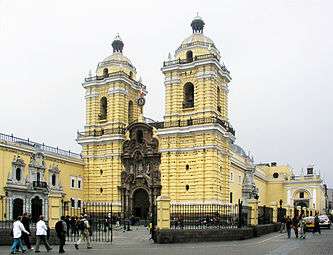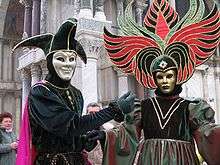Christian culture
| Part of a series on |
| Christian culture |
|---|
 |
| Christianity portal |
Christian culture is a term primarily used in academia to describe the cultural practices common to Christianity. With the rapid expansion of Christianity to Europe, Syria, Mesopotamia, Asia Minor, Egypt, Ethiopia, and India and by the end of the 4th century it had also become the official state church of the Roman Empire.[1][2][3] Christian culture has influenced and assimilated much from the Greco-Roman Byzantine,[4] Western culture,[5] Middle Eastern,[6][7] Slavic, Latin American,[8] Caucasian, and possibly from Indian[9] and African.
Western culture, throughout most of its history, has been nearly equivalent to Christian culture, and many of the population of the Western hemisphere could broadly be described as cultural Christians. The notion of "Europe" and the "Western World" has been intimately connected with the concept of "Christianity and Christendom" many even attribute Christianity for being the link that created a unified European identity.[10]
Though Western culture contained several polytheistic religions during its early years under the Greek and Roman empires, as the centralized Roman power waned, the dominance of the Catholic Church was the only consistent force in Western Europe.[11] Until the Age of Enlightenment,[12] Christian culture guided the course of philosophy, literature, art, music and science.[11][13] Christian disciplines of the respective arts have subsequently developed into Christian philosophy, Christian art, Christian music, Christian literature etc.
Christianity had a significant impact on education and science and medicine as the church created the bases of the Western system of education,[14] and was the sponsor of founding universities in the Western world as the university is generally regarded as an institution that has its origin in the Medieval Christian setting.[15][16] Many clerics throughout history have made significant contributions to science and Jesuits in particular have made numerous significant contributions to the development of science.[17][18][19] The cultural influence of Christianity includes social welfare,[20] founding hospitals,[21] economics (as the Protestant work ethic),[22][23] politics,[24] architecture,[25] literature[26] and family life.[27] Christianity it also had a strong impact on all other aspects of life: marriage and family, education, the humanities and sciences, the political and social order, the economy, and the arts.[28]
Eastern Christians (particularly Nestorian Christians) contributed to the Arab Islamic Civilization during the Ummayad and the Abbasid periods by translating works of Greek philosophers to Syriac and afterwards to Arabic.[29][30][31] They also excelled in philosophy, science, theology and medicine.[32][33]
Christians have made a myriad contributions in a broad and diverse range of fields, including the sciences, arts, politics, literatures and business.[34][35][36][37][38][39] According to 100 Years of Nobel Prizes a review of Nobel prizes award between 1901 and 2000 reveals that (65.4%) of Nobel Prizes Laureates, have identified Christianity in its various forms as their religious preference.[40]
Cultural Christians are secular people with a Christian heritage who may not believe in the religious claims of Christianity, but who retain an affinity for the popular culture, art, music, and so on related to it. Another frequent application of the term is to distinguish political groups in areas of mixed religious backgrounds.
Architecture

The architecture of cathedrals, basilicas and abbey churches is characterised by the buildings' large scale and follows one of several branching traditions of form, function and style that all ultimately derive from the Early Christian architectural traditions established in the Constantinian period.
Cathedrals in particular, as well as many abbey churches and basilicas, have certain complex structural forms that are found less often in parish churches. They also tend to display a higher level of contemporary architectural style and the work of accomplished craftsmen, and occupy a status both ecclesiastical and social that an ordinary parish church does not have. Such a cathedral or great church is generally one of the finest buildings within its region and is a focus of local pride. Many cathedrals and basilicas, and a number of abbey churches are among the world's most renowned works of architecture. These include St. Peter’s Basilica, Notre Dame de Paris, Cologne Cathedral, Salisbury Cathedral, Prague Cathedral, Lincoln Cathedral, the Basilica of St Denis, the Basilica of Santa Maria Maggiore, the Basilica of San Vitale, St Mark's Basilica, Westminster Abbey, Saint Basil's Cathedral, Washington National Cathedral, Basilica of the National Shrine of the Immaculate Conception, Cathedral Basilica of Saint Louis, Gaudí's incomplete Sagrada Familia and the ancient church of Hagia Sophia, now a museum.
The earliest large churches date from Late Antiquity. As Christianity and the construction of churches and cathedrals spread throughout the world, their manner of building was dependent upon local materials and local techniques. Different styles of architecture developed and their fashion spread, carried by the establishment of monastic orders, by the posting of bishops from one region to another and by the travelling of master stonemasons who served as architects.[41] The styles of the great church buildings are successively known as Early Christian, Byzantine, Romanesque, Gothic, Renaissance, Baroque, various Revival styles of the late 18th to early 20th centuries and Modern.[25] Overlaid on each of the academic styles are the regional characteristics. Some of these characteristics are so typical of a particular country or region that they appear, regardless of style, in the architecture of churches designed many centuries apart.[25]
Art
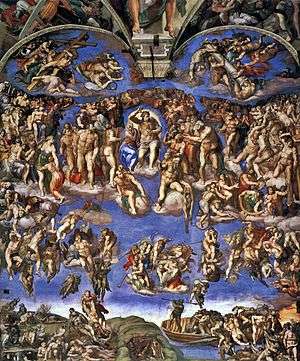
Christian art is sacred art which uses themes and imagery from Christianity. Most Christian groups use or have used art to some extent, although some have had strong objections to some forms of religious image, and there have been major periods of iconoclasm within Christianity.
Images of Jesus and narrative scenes from the Life of Christ are the most common subjects, and scenes from the Old Testament play a part in the art of most denominations. Images of the Virgin Mary and saints are much rarer in Protestant art than that of Roman Catholicism and Eastern Orthodoxy.
Christianity makes far wider use of images than related religions, in which figurative representations are forbidden, such as Islam and Judaism. However, there is also a considerable history of aniconism in Christianity from various periods.
Illumination
An illuminated manuscript is a manuscript in which the text is supplemented by the addition of decoration. The earliest surviving substantive illuminated manuscripts are from the period AD 400 to 600, primarily produced in Ireland, Constantinople and Italy. The majority of surviving manuscripts are from the Middle Ages, although many illuminated manuscripts survive from the 15th century Renaissance, along with a very limited number from Late Antiquity.
Most illuminated manuscripts were created as codices, which had superseded scrolls; some isolated single sheets survive. A very few illuminated manuscript fragments survive on papyrus. Most medieval manuscripts, illuminated or not, were written on parchment (most commonly of calf, sheep, or goat skin), but most manuscripts important enough to illuminate were written on the best quality of parchment, called vellum, traditionally made of unsplit calfskin, though high quality parchment from other skins was also called parchment.
Iconography
Christian art began, about two centuries after Christ, by borrowing motifs from Roman Imperial imagery, classical Greek and Roman religion and popular art. Religious images are used to some extent by the Abrahamic Christian faith, and often contain highly complex iconography, which reflects centuries of accumulated tradition. In the Late Antique period iconography began to be standardised, and to relate more closely to Biblical texts, although many gaps in the canonical Gospel narratives were plugged with matter from the apocryphal gospels. Eventually the Church would succeed in weeding most of these out, but some remain, like the ox and ass in the Nativity of Christ.
An icon is a religious work of art, most commonly a painting, from Orthodox Christianity. Christianity has used symbolism from its very beginnings.[42] In both East and West, numerous iconic types of Christ, Mary and saints and other subjects were developed; the number of named types of icons of Mary, with or without the infant Christ, was especially large in the East, whereas Christ Pantocrator was much the commonest image of Christ.
Christian symbolism invests objects or actions with an inner meaning expressing Christian ideas. Christianity has borrowed from the common stock of significant symbols known to most periods and to all regions of the world. Religious symbolism is effective when it appeals to both the intellect and the emotions. Especially important depictions of Mary include the Hodegetria and Panagia types. Traditional models evolved for narrative paintings, including large cycles covering the events of the Life of Christ, the Life of the Virgin, parts of the Old Testament, and, increasingly, the lives of popular saints. Especially in the West, a system of attributes developed for identifying individual figures of saints by a standard appearance and symbolic objects held by them; in the East they were more likely to identified by text labels.
Each saint has a story and a reason why he or she led an exemplary life. Symbols have been used to tell these stories throughout the history of the Church. A number of Christian saints are traditionally represented by a symbol or iconic motif associated with their life, termed an attribute or emblem, in order to identify them. The study of these forms part of iconography in Art history. They were particularly
Eastern Christian art

The dedication of Constantinople as capital in 330 AD created a great new Christian artistic centre for the Eastern Roman Empire, which soon became a separate political unit. Major Constantinopolitan churches built under Constantine and his son, Constantius II, included the original foundations of Hagia Sophia and the Church of the Holy Apostles.[43] As the Western Roman Empire disintegrated and was taken over by "barbarian" peoples, the art of the Byzantine Empire reached levels of sophistication, power and artistry not previously seen in Christian art, and set the standards for those parts of the West still in touch with Constantinople.

This achievement was checked by the controversy over the use of graven images, and the proper interpretation of the Second Commandment, which led to the crisis of Iconoclasm or destruction of religious images, which racked the Empire between 726 and 843. The restoration of Orthodoxy resulted in a strict standardization of religious imagery within the Eastern Church. Byzantine art became increasingly conservative, as the form of images themselves, many accorded divine origin or thought to have been be painted by Saint Luke or other figures, was held to have a status not far off that of a scriptural text. They could be copied, but not improved upon. As a concession to Iconoclast sentiment, monumental religious sculpture was effectively banned. Neither of these attitudes were held in Western Europe, but Byzantine art nonetheless had great influence there until the High Middle Ages, and remained very popular long after that, with vast numbers of icons of the Cretan School exported to Europe as late as the Renaissance. Where possible, Byzantine artists were borrowed for projects such as mosaics in Venice and Palermo. The enigmatic frescoes at Castelseprio may be an example of work by a Greek artist working in Italy.
The art of Eastern Catholicism has always been rather closer to the Orthodox art of Greece and Russia, and in countries near the Orthodox world, notably Poland, Catholic art has many Orthodox influences. The Black Madonna of Częstochowa may well have been of Byzantine origin - it has been repainted and this is hard to tell. Other images that are certainly of Greek origin, like the Salus Populi Romani and Our Lady of Perpetual Help, both icons in Rome, have been subjects of specific veneration for centuries.
Although the influence has often been resisted, especially in Russia, Catholic art has also affected Orthodox depictions in many respects, especially in countries like Romania, and in the post-Byzantine Cretan School, which led Greek Orthodox art under Venetian rule in the 15th and 16th centuries. El Greco left Crete when relatively young, but Michael Damaskinos returned after a brief period in Venice, and was able to switch between Italian and Greek styles. Even the traditionalist Theophanes the Cretan, working mainly on Mount Athos, nevertheless shows unmistakable Western influence.
Many Eastern Orthodox states in Eastern Europe, as well as to some degree the Muslim states of the eastern Mediterranean, preserved many aspects of the empire's culture and art for centuries afterward. A number of states contemporary with the Byzantine Empire were culturally influenced by it, without actually being part of it (the "Byzantine commonwealth"). These included Bulgaria, Serbia, and the Rus, as well as some non-Orthodox states like the Republic of Venice and the Kingdom of Sicily, which had close ties to the Byzantine Empire despite being in other respects part of western European culture. Art produced by Eastern Orthodox Christians living in the Ottoman Empire is often called "post-Byzantine." Certain artistic traditions that originated in the Byzantine Empire, particularly in regard to icon painting and church architecture, are maintained in Greece, Serbia, Bulgaria, Macedonia, Russia and other Eastern Orthodox countries to the present day.
Roman Catholic art

Roman Catholic art consists of all visual works produced in an attempt to illustrate, supplement and portray in tangible form the teachings of the Catholic Church. This includes sculpture, painting, mosaics, metalwork, embroidery and even architecture. Catholic art has played a leading role in the history and development of Western Art since at least the fourth century. The principal subject matter of Catholic Art has been the life and times of Jesus Christ, along with those of his disciples, the saints, and the events of the Jewish Old Testament.
The earliest surviving art works are the painted frescoes on the walls of the catacombs and meeting houses of the persecuted Christians of the Roman Empire. The Christian Church in Rome was influenced by the Roman style of art and the religious Christian artists of the time. The stone sarcophagi of Roman Christians exhibit the earliest surviving carved statuary of Jesus, Mary and other biblical figures. The legalisation of Christianity transformed Catholic art, which adopted richer forms such as mosaics and illuminated manuscripts. The iconoclasm controversy briefly divided the eastern and western churches, after which artistic development progressed in separate directions. Romanesque and Gothic art flowered in the Western Church as the style of painting and statuary moved in an increasingly naturalistic direction. The Protestant Reformation produced new waves of image-destruction, to which the Church responded with the dramatic and emotive Baroque and Rococo styles. In the 19th century the leadership in western art moved away from the Catholic Church which, after embracing historical revivalism was increasingly affected by the modernist movement, a movement that in its "rebellion" against nature, counters the Church's emphasis on nature as a good creation of God.
Renaissance artists such as Raphael, Michelangelo, Leonardo da Vinci, Bernini, Botticelli, Fra Angelico, Tintoretto, Caravaggio, and Titian, were among a multitude of innovative virtuosos sponsored by the Church.[44]
British art historian Kenneth Clark wrote that Western Europe's first "great age of civilisation" was ready to begin around the year 1000. From 1100, he wrote, monumental abbeys and cathedrals were constructed and decorated with sculptures, hangings, mosaics and works belonging one of the greatest epochs of art and providing stark contrast to the monotonous and cramped conditions of ordinary living during the period. Abbot Suger of the Abbey of St. Denis is considered an influential early patron of Gothic architecture and believed that love of beauty brought people closer to God: "The dull mind rises to truth through that which is material". Clarke calls this "the intellectual background of all the sublime works of art of the next century and in fact has remained the basis of our belief of the value of art until today".[45]
Later, during The Renaissance and Counter-Reformation, Catholic artists produced many of the unsurpassed masterpieces of Western art - often inspired by Biblical themes: from Michelangelo's David and Pietà sculptures, to Da Vinci's Last Supper and Raphael's various Madonna paintings. Referring to a "great outburst of creative energy such as took place in Rome between 1620 and 1660", Kenneth Clarke wrote:[45]
[W]ith a single exception, the great artists of the time were all sincere, conforming Christians. Guercino spent much of his mornings in prayer; Bernini frequently went into retreats and practised the Spiritual Exercises of Saint Ignatius; Rubens attended Mass every morning before beginning work. The exception was Caravaggio, who was like the hero of a modern play, except that he happened to paint very well. This conformism was not based on fear of the Inquisition, but on the perfectly simple belief that the faith which had inspired the great saints of the preceding generation was something by which a man should regulate his life.
Protestant art

The Protestant Reformation during the 16th century in Europe almost entirely rejected the existing tradition of Catholic art, and very often destroyed as much of it as it could reach. A new artistic tradition developed, producing far smaller quantities of art that followed Protestant agendas and diverged drastically from the southern European tradition and the humanist art produced during the High Renaissance. In turn, the Catholic Counter-Reformation both reacted against and responded to Protestant criticisms of art in Roman Catholicism to produce a more stringent style of Catholic art. Protestant religious art both embraced Protestant values and assisted in the proliferation of Protestantism, but the amount of religious art produced in Protestant countries was hugely reduced. Artists in Protestant countries diversified into secular forms of art like history painting, landscape painting, portrait painting and still life.
Prominent painters with Protestant background were, for example, Albrecht Dürer, Hans Holbein the Younger, Lucas Cranach, Rembrandt, and Vincent van Gogh. World literature was enriched by the works of Edmund Spenser, John Milton, John Bunyan, John Donne, John Dryden, Daniel Defoe, William Wordsworth, Jonathan Swift, Johann Wolfgang Goethe, Friedrich Schiller, Samuel Taylor Coleridge, Edgar Allan Poe, Matthew Arnold, Conrad Ferdinand Meyer, Theodor Fontane, Washington Irving, Robert Browning, Emily Dickinson, Emily Brontë, Charles Dickens, Nathaniel Hawthorne, Thomas Stearns Eliot, John Galsworthy, Thomas Mann, William Faulkner, John Updike, and many others.
Music
Christian music is music that has been written to express either personal or a communal belief regarding Christian life and faith. Common themes of Christian music include praise, worship, penitence, and lament, and its forms vary widely across the world.
Like other forms of music the creation, performance, significance, and even the definition of Christian music varies according to culture and social context. Christian music is composed and performed for many purposes, ranging from aesthetic pleasure, religious or ceremonial purposes, or as an entertainment product for the marketplace.
In music, Catholic monks developed the first forms of modern Western musical notation in order to standardize liturgy throughout the worldwide Church,[46] and an enormous body of religious music has been composed for it through the ages. This led directly to the emergence and development of European classical music, and its many derivatives. The Baroque style, which encompassed music, art, and architecture, was particularly encouraged by the post-Reformation Catholic Church as such forms offered a means of religious expression that was stirring and emotional, intended to stimulate religious fervor.[47]
The list of Catholic composers and Catholic sacred music which have a prominent place in Western culture is extensive, but includes Ludwig van Beethoven's Ode to Joy; Wolfgang Amadeus Mozart's Ave Verum Corpus; Franz Schubert's Ave Maria, César Franck's Panis Angelicus, and Antonio Vivaldi's Gloria.
Martin Luther, Paul Gerhardt, George Wither, Isaac Watts, Charles Wesley, William Cowper, and many other authors and composers created well-known church hymns. Musicians like Heinrich Schütz, Johann Sebastian Bach, George Frederick Handel, Henry Purcell, Johannes Brahms, and Felix Mendelssohn-Bartholdy composed great works of music.
| Josquin des Prez (1450/1455 – 1521) | Claudio Monteverdi (1567 – 1643) | Antonio Vivaldi (1678 – 1741) | Johann Sebastian Bach (1685 – 1750) | Wolfgang Amadeus Mozart (1756 – 1791) | Ludwig van Beethoven (1770 – 1827) | Franz Schubert (1797 – 1828) | Anton Bruckner (1824 – 1896) |
|---|---|---|---|---|---|---|---|
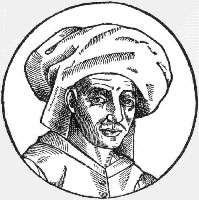 |
.jpg) |
 |
 |
 |
 |
 |
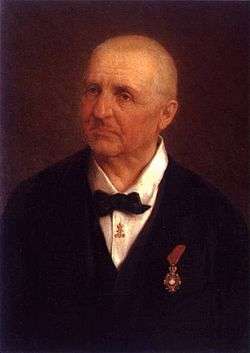 |
Literature and poetry

Christian literature is writing that deals with Christian themes and incorporates the Christian world view. This constitutes a huge body of extremely varied writing. Christian poetry is any poetry that contains Christian teachings, themes, or references. The influence of Christianity on poetry has been great in any area that Christianity has taken hold. Christian poems often directly reference the Bible, while others provide allegory.
While falling within the strict definition of literature, the Bible is not generally considered literature. However, the Bible has been treated and appreciated as literature; the King James Version in particular has long been considered a masterpiece of English prose, whatever may be thought of its religious significance. Several retellings of the Bible, or parts of the Bible, have also been made with the aim of emphasising its literary qualities.

In Byzantine literature, four different cultural elements are recognised: the Greek, the Christian, the Roman, and the Oriental. Byzantine literature is often classified in five groups: historians and annalists, encyclopaedists (Patriarch Photios, Michael Psellus, and Michael Choniates are regarded as the greatest encyclopaedists of Byzantium) and essayists, and writers of secular poetry. The only genuine heroic epic of the Byzantines is the Digenis Acritas. The remaining two groups include the new literary species: ecclesiastical and theological literature, and popular poetry.[49]
The list of Catholic authors and literary works is vast. With a literary tradition spanning two millennia, the Bible and Papal Encyclicals have been constants of the Catholic canon but countless other historical works may be listed as noteworthy in terms of their influence on Western society. From late Antiquity, St Augustine's book Confessions, which outlines his sinful youth and conversion to Christianity, is widely considered to be the first autobiography of ever written in the canon of Western Literature. Augustine profoundly influenced the coming medieval worldview. The Summa Theologica, written 1265–1274, is the best-known work of Thomas Aquinas (c.1225–1274), and although unfinished, "one of the classics of the history of philosophy and one of the most influential works of Western literature."[50] It is intended as a manual for beginners in theology and a compendium of all of the main theological teachings of the Church. It presents the reasoning for almost all points of Christian theology in the West. The epic poetry of the Italian Dante and his Divine Comedy of the late Middle Ages is also considered immensely influential. The English statesman and philosopher, Thomas More, wrote the seminal work Utopia in 1516. St Ignatius Loyola, a key figure in the Catholic counter-reformation, is the author of an influential book of meditations known as the Spiritual Exercises.
Philosophy
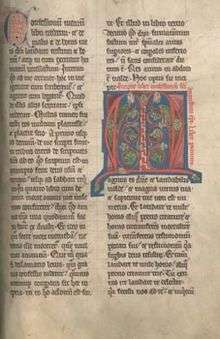
Christian philosophy is a term to describe the fusion of various fields of philosophy with the theological doctrines of Christianity. Scholasticism, which means "that [which] belongs to the school", and was a method of learning taught by the academics (or school people) of medieval universities c. 1100–1500. Scholasticism originally started to reconcile the philosophy of the ancient classical philosophers with medieval Christian theology. Scholasticism is not a philosophy or theology in itself but a tool and method for learning which places emphasis on dialectical reasoning.
Medieval philosophy is the philosophy of Western Europe and the Middle East during the Middle Ages, roughly extending from the Christianization of the Roman Empire until the Renaissance.[51] Medieval philosophy is defined partly by the rediscovery and further development of classical Greek and Hellenistic philosophy, and partly by the need to address theological problems and to integrate the then widespread sacred doctrines of Abrahamic religion (Islam, Judaism, and Christianity) with secular learning.
The history of western European medieval philosophy is traditionally divided into two main periods: the period in the Latin West following the Early Middle Ages until the 12th century, when the works of Aristotle and Plato were preserved and cultivated; and the "golden age" of the 12th, 13th and 14th centuries in the Latin West, which witnessed the culmination of the recovery of ancient philosophy, and significant developments in the field of philosophy of religion, logic and metaphysics.

The medieval era was disparagingly treated by the Renaissance humanists, who saw it as a barbaric "middle" period between the classical age of Greek and Roman culture, and the "rebirth" or renaissance of classical culture. Yet this period of nearly a thousand years was the longest period of philosophical development in Europe, and possibly the richest. Jorge Gracia has argued that "in intensity, sophistication, and achievement, the philosophical flowering in the thirteenth century could be rightly said to rival the golden age of Greek philosophy in the fourth century B.C."[52]
Some problems discussed throughout this period are the relation of faith to reason, the existence and unity of God, the object of theology and metaphysics, the problems of knowledge, of universals, and of individuation.
Philosophers from the Middle Ages include the Christian philosophers Augustine of Hippo, Boethius, Anselm, Gilbert of Poitiers, Peter Abelard, Roger Bacon, Bonaventure, Thomas Aquinas, Duns Scotus, William of Ockham and Jean Buridan; the Jewish philosophers Maimonides and Gersonides; and the Muslim philosophers Alkindus, Alfarabi, Alhazen, Avicenna, Algazel, Avempace, Abubacer, Ibn Khaldūn, and Averroes. The medieval tradition of Scholasticism continued to flourish as late as the 17th century, in figures such as Francisco Suarez and John of St. Thomas.
Aquinas, father of Thomism, was immensely influential in Catholic Europe, placed a great emphasis on reason and argumentation, and was one of the first to use the new translation of Aristotle's metaphysical and epistemological writing. His work was a significant departure from the Neoplatonic and Augustinian thinking that had dominated much of early Scholasticism.
The Renaissance ("rebirth") was a period of transition between the Middle Ages and modern thought,[53] in which the recovery of classical texts helped shift philosophical interests away from technical studies in logic, metaphysics, and theology towards eclectic inquiries into morality, philology, and mysticism.[54] The study of the classics and the humane arts generally, such as history and literature, enjoyed a scholarly interest hitherto unknown in Christendom, a tendency referred to as humanism.[55] Displacing the medieval interest in metaphysics and logic, the humanists followed Petrarch in making man and his virtues the focus of philosophy.[56]
These new movements in philosophy developed contemporaneously with larger religious and political transformations in Europe: the Reformation and the decline of feudalism. Though the theologians of the Protestant Reformation showed little direct interest in philosophy, their destruction of the traditional foundations of theological and intellectual authority harmonized with a revival of fideism and skepticism in thinkers such as Erasmus, Montaigne, and Francisco Sanches.[57] Meanwhile, the gradual centralization of political power in nation-states was echoed by the emergence of secular political philosophies, as in the works of Niccolò Machiavelli (often described as the first modern political thinker, or a key turning point towards modern political thinking), Thomas More, Erasmus, Justus Lipsius, Jean Bodin, and Hugo Grotius.[58][59]
| Tertullian (c. 155 – c. 240 AD) | Clement of Alexandria (c. 150 – c. 215) | Athanasius of Alexandria (c. 296–298 – 373) | Augustine of Hippo (354 – 430) | Thomas Aquinas (1225 – 1274) | William of Ockham (c. 1287 – 1347) | Hugo Grotius (1583 – 1645) | Blaise Pascal (1623 – 1662) |
|---|---|---|---|---|---|---|---|
 |
 |
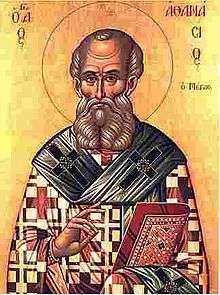 |
 |
 |
 |
 |
|
Science and technology
Earlier attempts at reconciliation of Christianity with Newtonian mechanics appear quite different from later attempts at reconciliation with the newer scientific ideas of evolution or relativity.[60] Many early interpretations of evolution polarized themselves around a struggle for existence. These ideas were significantly countered by later findings of universal patterns of biological cooperation. According to John Habgood, all man really knows here is that the universe seems to be a mix of good and evil, beauty and pain, and that suffering may somehow be part of the process of creation. Habgood holds that Christians should not be surprised that suffering may be used creatively by God, given their faith in the symbol of the Cross.[60] Robert John Russell has examined consonance and dissonance between modern physics, evolutionary biology, and Christian theology.[61][62]
Christian philosophers Augustine of Hippo (354-430) and Thomas Aquinas[63] held that scriptures can have multiple interpretations on certain areas where the matters were far beyond their reach, therefore one should leave room for future findings to shed light on the meanings. The "Handmaiden" tradition, which saw secular studies of the universe as a very important and helpful part of arriving at a better understanding of scripture, was adopted throughout Christian history from early on.[64] Also the sense that God created the world as a self operating system is what motivated many Christians throughout the Middle Ages to investigate nature.[65]
Modern historians of science such as J.L. Heilbron,[66] Alistair Cameron Crombie, David Lindberg,[67] Edward Grant, Thomas Goldstein,[68] and Ted Davis have reviewed the popular notion that medieval Christianity was a negative influence in the development of civilization and science. In their views, not only did the monks save and cultivate the remnants of ancient civilization during the barbarian invasions, but the medieval church promoted learning and science through its sponsorship of many universities which, under its leadership, grew rapidly in Europe in the 11th and 12th centuries, St. Thomas Aquinas, the Church's "model theologian", not only argued that reason is in harmony with faith, he even recognized that reason can contribute to understanding revelation, and so encouraged intellectual development. He was not unlike other medieval theologians who sought out reason in the effort to defend his faith.[69] Some of today's scholars, such as Stanley Jaki, have claimed that Christianity with its particular worldview, was a crucial factor for the emergence of modern science.[70]
Individual scientists' beliefs

Many well-known historical figures who influenced Western science considered themselves Christian such as Copernicus,[71] Galileo,[72] Kepler,[73] Newton[74] and Boyle.[75]
Isaac Newton, for example, believed that gravity caused the planets to revolve about the Sun, and credited God with the design. In the concluding General Scholium to the Philosophiae Naturalis Principia Mathematica, he wrote: "This most beautiful System of the Sun, Planets and Comets, could only proceed from the counsel and dominion of an intelligent and powerful being." Other famous founders of science who adhered to Christian beliefs include Galileo, Johannes Kepler, and Blaise Pascal.[76][77]
According to 100 Years of Nobel Prizes a review of Nobel prizes award between 1901 and 2000 reveals that (65.4%) of Nobel Prizes Laureates, have identified Christianity in its various forms as their religious preference.[78]
Overall, Christians have won a total of 72.5% in Chemistry between 1901 and 2000,[79] 65.3% in Physics,[79] 62% in Medicine,[79] 54% in Economics.[79]
Eastern Christianity
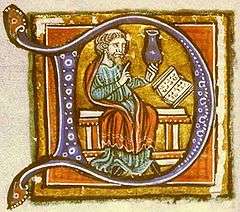
Christians (particularly Nestorian Christians) contributed to the Arab Islamic Civilization during the Ummayad and the Abbasid periods by translating works of Greek philosophers to Syriac and afterwards to Arabic.[29][31][80] During the 4th through the 7th centuries, scholarly work in the Syriac and Greek languages was either newly initiated, or carried on from the Hellenistic period. Centers of learning and of transmission of classical wisdom included colleges such as the School of Nisibis, and later the School of Edessa, and the renowned hospital and medical academy of Jundishapur; libraries included the Library of Alexandria and the Imperial Library of Constantinople; other centers of translation and learning functioned at Merv, Salonika, Nishapur and Ctesiphon, situated just south of what later became Baghdad.[81][82] The House of Wisdom was a library, translation institute, and academy established in Abbasid-era Baghdad, Iraq.[83][84] Nestorians played a prominent role in the formation of Arab culture,[33] with the Jundishapur school being prominent in the late Sassanid, Umayyad and early Abbasid periods.[85] Notably, eight generations of the Nestorian Bukhtishu family served as private doctors to caliphs and sultans between the 8th and 11th centuries.[86][87]
Catholic church
While refined and clarified over the centuries, the Roman Catholic position on the relationship between science and religion is one of harmony, and has maintained the teaching of natural law as set forth by Thomas Aquinas. For example, regarding scientific study such as that of evolution, the church's unofficial position is an example of theistic evolution, stating that faith and scientific findings regarding human evolution are not in conflict, though humans are regarded as a special creation, and that the existence of God is required to explain both monogenism and the spiritual component of human origins. Catholic schools have included all manners of scientific study in their curriculum for many centuries.[88]
Galileo once stated "The intention of the Holy Spirit is to teach us how to go to heaven, not how the heavens go."[89] In 1981 John Paul II, then pope of the Roman Catholic Church, spoke of the relationship this way: "The Bible itself speaks to us of the origin of the universe and its make-up, not in order to provide us with a scientific treatise, but in order to state the correct relationships of man with God and with the universe. Sacred Scripture wishes simply to declare that the world was created by God, and in order to teach this truth it expresses itself in the terms of the cosmology in use at the time of the writer".[90]

The influence of the Church on Western letters and learning has been formidable. The ancient texts of the Bible have deeply influenced Western art, literature and culture. For centuries following the collapse of the Western Roman Empire, small monastic communities were practically the only outposts of literacy in Western Europe. In time, the Cathedral schools developed into Europe's earliest universities and the church has established thousands of primary, secondary and tertiary institutions throughout the world in the centuries since. The Church and clergymen have also sought at different times to censor texts and scholars. Thus different schools of opinion exist as to the role and influence of the Church in relation to western letters and learning.
One view, first propounded by Enlightenment philosophers, asserts that the Church's doctrines are entirely superstitious and have hindered the progress of civilization. Communist states have made similar arguments in their education in order to inculcate a negative view of Catholicism (and religion in general) in their citizens. The most famous incidents cited by such critics are the Church's condemnations of the teachings of Copernicus, Galileo Galilei and Johannes Kepler.
The Church's priest-scientists, many of whom were Jesuits, have been among the leading lights in astronomy, genetics, geomagnetism, meteorology, seismology, and solar physics, becoming some of the "fathers" of these sciences. Examples include important churchmen such as the Augustinian abbot Gregor Mendel (pioneer in the study of genetics), Roger Bacon (a Franciscan friar who was one of the early advocates of the scientific method), and Belgian priest Georges Lemaître (the first to propose the Big Bang theory). Other notable priest scientists have included Albertus Magnus, Robert Grosseteste, Nicholas Steno, Francesco Grimaldi, Giambattista Riccioli, Roger Boscovich, and Athanasius Kircher. Even more numerous are Catholic laity involved in science:Henri Becquerel who discovered radioactivity; Galvani, Volta, Ampere, Marconi, pioneers in electricity and telecommunications; Lavoisier, "father of modern chemistry"; Vesalius, founder of modern human anatomy; and Cauchy, one of the mathematicians who laid the rigorous foundations of calculus.
Throughout history many of the Roman Catholic clerics have made contributions to science, mostly during periods of Church domination of public life. These cleric-scientists include Nicolaus Copernicus, Gregor Mendel, Georges Lemaître, Albertus Magnus, Roger Bacon, Pierre Gassendi, Roger Joseph Boscovich, Marin Mersenne, Bernard Bolzano, Francesco Maria Grimaldi, Nicole Oresme, Jean Buridan, Robert Grosseteste, Christopher Clavius, Nicolas Steno, Athanasius Kircher, Giovanni Battista Riccioli, William of Ockham, and others. The Catholic Church has also produced many lay scientists and mathematicians.
| Robert Grosseteste (1175 – 1253) | Albertus Magnus (1200 – 1280) | Nicolaus Copernicus (1473 – 1543) | Marin Mersenne (1588 – 1648) | Christopher Clavius (1538 – 1612) | Nicolas Steno (1638 – 1686) | Athanasius Kircher (1602–1680) | Gregor Mendel (1822 – 1884) |
|---|---|---|---|---|---|---|---|
 |
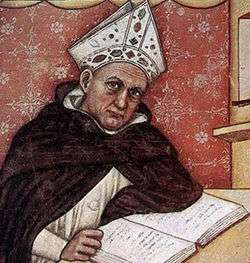 |
 |
 |
 |
 |
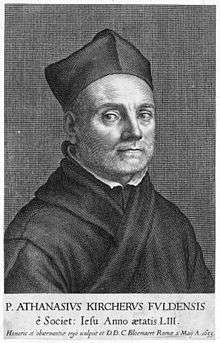 |
 |
Jesuit in science
The Jesuits have made numerous significant contributions to the development of science. For example, the Jesuits have dedicated significant study to earthquakes, and seismology has been described as "the Jesuit science".[91] The Jesuits have been described as "the single most important contributor to experimental physics in the seventeenth century".[92] According to Jonathan Wright in his book God's Soldiers, by the eighteenth century the Jesuits had "contributed to the development of pendulum clocks, pantographs, barometers, reflecting telescopes and microscopes, to scientific fields as various as magnetism, optics and electricity. They observed, in some cases before anyone else, the colored bands on Jupiter's surface, the Andromeda nebula and Saturn's rings. They theorized about the circulation of the blood (independently of Harvey), the theoretical possibility of flight, the way the moon affected the tides, and the wave-like nature of light."[93]
Protestant

Protestantism had an important influence on science. According to the Merton Thesis there was a positive correlation between the rise of Puritanism and Protestant Pietism on the one hand and early experimental science on the other.[94] The Merton Thesis has two separate parts: Firstly, it presents a theory that science changes due to an accumulation of observations and improvement in experimental techniques and methodology; secondly, it puts forward the argument that the popularity of science in 17th-century England and the religious demography of the Royal Society (English scientists of that time were predominantly Puritans or other Protestants) can be explained by a correlation between Protestantism and the scientific values.[95] In his theory, Robert K. Merton focused on English Puritanism and German Pietism as having been responsible for the development of the scientific revolution of the 17th and 18th centuries. Merton explained that the connection between religious affiliation and interest in science was the result of a significant synergy between the ascetic Protestant values and those of modern science.[96] Protestant values encouraged scientific research by allowing science to study God's influence on the world and thus providing a religious justification for scientific research.[94]
According of Scientific Elite: Nobel Laureates in the United State by Harriet Zuckerman, a review of American Nobel prizes winners awarded between 1901 and 1972, 72% of American Nobel Prize Laureates, have identified from Protestant background.[97] Overall, Protestant have won a total of 84.2% of all the American Nobel Prizes in Chemistry,[97] 60% in Medicine,[97] 58.6% in Physics,[97] between 1901 and 1972.
Education

The university is generally regarded as an institution that has its origin in the Medieval Christian setting.[15][16] Prior to the establishment of universities, European higher education took place for hundreds of years in Christian cathedral schools or monastic schools (Scholae monasticae), in which monks and nuns taught classes; evidence of these immediate forerunners of the later university at many places dates back to the 6th century AD.[98]
Missionary activity for the Catholic Church has always incorporated education of evangelized peoples as part of its social ministry. History shows that in evangelized lands, the first people to operate schools were Roman Catholics. In some countries, the Church is the main provider of education or significantly supplements government forms of education. Presently, the Church operates the world's largest non-governmental school system.[99] Many of Western Civilization's most influential universities were founded by the Catholic Church.

The Catholic Church founded the West's first universities, which were preceded by the schools attached to monasteries and cathedrals, and generally staffed by monks and friars.[100] Universities began springing up in Italian towns like Salerno, which became a leading medical school, translating the work of Greek and Arabic physicians into Latin. Bologna University became the most influential of the early universities, which first specialised in canon law and civil law. Paris University, specialising in such topics as theology, came to rival Bologna under the supervision of Notre Dame Cathedral. Oxford University in England later came rival Paris in Theology and Salamanca University was founded in Spain in 1243. According to the historian Geoffrey Blainey, the universities benefitted from the use of Latin, the common language of the Church, and its internationalist reach, and their role was to "teach, argue and reason within a Christian framework".[100] The medieval universities of Western Christendom were well-integrated across all of Western Europe, encouraged freedom of enquiry and produced a great variety of fine scholars and natural philosophers, including Robert Grosseteste of the University of Oxford, an early expositor of a systematic method of scientific experimentation;[101] and Saint Albert the Great, a pioneer of biological field research[102]
As the Reformers wanted all members of the church to be able to read the Bible, education on all levels got a strong boost. Compulsory education for both boys and girls was introduced. For example, the Puritans who established Massachusetts Bay Colony in 1628 founded Harvard College only eight years later. About a dozen other colleges followed in the 18th century, including Yale University (1701). Pennsylvania also became a centre of learning.[103][104] While Princeton University was a Presbyterian foundation. Protestantism also initiated translations of the Bible into national languages and hereby supported the development of national literatures.
A large number of mainline Protestants have played leadership roles in many aspects of American life, including politics, business, science, the arts, and education. They founded most of the country's leading institutes of higher education.[105] The Ivy League universities have strong White Anglo-Saxon Protestant historical ties, and their influence continues today. Until about World War II, Ivy League universities were composed largely of WASP students.
Some of the first colleges and universities in America, including Harvard,[106] Yale,[107] Princeton,[108] Columbia,[109] Dartmouth, Williams, Bowdoin, Middlebury, and Amherst, all were founded by the Mainline Protestantism, as were later Carleton, Duke,[110] Oberlin, Beloit, Pomona, Rollins and Colorado College.
Thought and work ethic

The Protestant concept of God and man allows believers to use all their God-given faculties, including the power of reason. That means that they are allowed to explore God's creation and, according to Genesis 2:15, make use of it in a responsible and sustainable way. Thus a cultural climate was created that greatly enhanced the development of the humanities and the sciences.[111] Another consequence of the Protestant understanding of man is that the believers, in gratitude for their election and redemption in Christ, are to follow God's commandments. Industry, frugality, calling, discipline, and a strong sense of responsibility are at the heart of their moral code.[112][113] In particular, John Calvin rejected luxury. Therefore, craftsmen, industrialists, and other businessmen were able to reinvest the greater part of their profits in the most efficient machinery and the most modern production methods that were based on progress in the sciences and technology. As a result, productivity grew, which led to increased profits and enabled employers to pay higher wages. In this way, the economy, the sciences, and technology reinforced each other. The chance to participate in the economic success of technological inventions was a strong incentive to both inventors and investors.[114][115][116][117] The Protestant work ethic was an important force behind the unplanned and uncoordinated mass action that influenced the development of capitalism and the industrial revolution. This idea is also known as the "Protestant ethic thesis."[118] In the book The Central Liberal Truth: How Politics Can Change a Culture and Save It from Itself Lawrence E. Harrison argues that Protestantism along with Confucianism, and Judaism have been more successful in promoting progress, culture and society. Due to the Protestant virtues of education, achievement, work ethic, merit, frugality, and honesty.
Some mainline Protestant denominations such as Episcopalians and Presbyterians and congregationalist tend to be considerably wealthier[119] and better educated (having high proportion of graduate and post-graduate degrees per capita) than most other religious groups in America,[120] and are disproportionately represented in the upper reaches of American business,[121] law and politics, especially the Republican Party.[122] Large numbers of the most wealthy and affluent American families as the Vanderbilts and Astors, Rockefeller, Du Pont, Roosevelt, Forbes, Whitneys, the Morgans and Harrimans are Mainline Protestant families.[119]
Festivals

Roman Catholics, Anglicans, Eastern Christians, and traditional Protestant communities frame worship around the liturgical year. The liturgical cycle divides the year into a series of seasons, each with their theological emphases, and modes of prayer, which can be signified by different ways of decorating churches, colours of paraments and vestments for clergy,[123] scriptural readings, themes for preaching and even different traditions and practices often observed personally or in the home.
Western Christian liturgical calendars are based on the cycle of the Roman Rite of the Catholic Church,[123] and Eastern Christians use analogous calendars based on the cycle of their respective rites. Calendars set aside holy days, such as solemnities which commemorate an event in the life of Jesus or Mary, the saints, periods of fasting such as Lent, and other pious events such as memoria or lesser festivals commemorating saints. Christian groups that do not follow a liturgical tradition often retain certain celebrations, such as Christmas, Easter and Pentecost: these are the celebrations of Christ's birth, resurrection and the descent of the Holy Spirit upon the Church, respectively. A few denominations make no use of a liturgical calendar.[124]
-
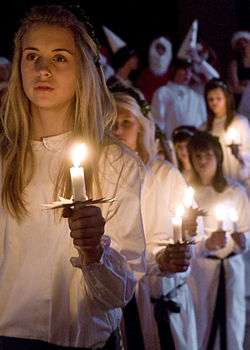
Saint Lucy's Day procession
-

Celebrating the Epiphany in Bulgaria
-
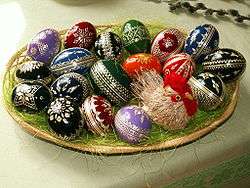
Easter eggs are a popular cultural symbol of Easter.
-

Procession of pasos during the Holy Week
Religious life

Roman Catholic theology enumerates seven sacraments:[125] Baptism (Christening), Confirmation (Chrismation), Eucharist (Communion), Penance (Reconciliation), Anointing of the Sick (before the Second Vatican Council generally called Extreme Unction), Matrimony
In Christian belief and practice, a sacrament is a rite, instituted by Christ, that mediates grace, constituting a sacred mystery. The term is derived from the Latin word sacramentum, which was used to translate the Greek word for mystery. Views concerning both what rites are sacramental, and what it means for an act to be a sacrament vary among Christian denominations and traditions.[126]
The most conventional functional definition of a sacrament is that it is an outward sign, instituted by Christ, that conveys an inward, spiritual grace through Christ. The two most widely accepted sacraments are Baptism and the Eucharist (or Holy Communion), however, the majority of Christians also recognize five additional sacraments: Confirmation (Chrismation in the Orthodox tradition), Holy orders (ordination), Penance (or Confession), Anointing of the Sick, and Matrimony (see Christian views on marriage).[126]
Taken together, these are the Seven Sacraments as recognized by churches in the High Church tradition—notably Roman Catholic, Eastern Orthodox, Oriental Orthodox, Independent Catholic, Old Catholic, many Anglicans, and some Lutherans. Most other denominations and traditions typically affirm only Baptism and Eucharist as sacraments, while some Protestant groups, such as the Quakers, reject sacramental theology.[126] Christian denominations, such as Baptists, which believe these rites do not communicate grace, prefer to call Baptism and Holy Communion ordinances rather than sacraments.
Today, most Christian denominations are neutral about religious male circumcision, neither requiring it nor forbidding it. The practice is customary among the Coptic, Ethiopian, and Eritrean Orthodox Churches, and also some other African churches.[127]
Worship can be varied for special events like baptisms or weddings in the service or significant feast days. In the early church, Christians and those yet to complete initiation would separate for the Eucharistic part of the worship. In many churches today, adults and children will separate for all or some of the service to receive age-appropriate teaching. Such children's worship is often called Sunday school or Sabbath school (Sunday schools are often held before rather than during services).
Cuisine

In mainstream Nicene Christianity, there is no restriction on kinds of animals that can be eaten.[128][129] This practice stems from Peter's vision of a sheet with animals, in which Saint Peter "sees a sheet containing animals of every description lowered from the sky."[130] Nonetheless, the New Testament does give a few guidelines about the consumption of meat, practiced by the Christian Church today; one of these is not consuming food knowingly offered to pagan idols,[131] a conviction that the early Church Fathers, such as Clement of Alexandria and Origen preached.[132] In addition, Christians traditionally bless any food before eating it with a mealtime prayer (grace), as a sign of thanking God for the meal they have.[133]
Christian cooking combines the food of many cultures in which Christian have lived. A special Christmas family meal is traditionally an important part of the holiday's celebration, and the food that is served varies greatly from country to country. Some regions, such as Sicily, have special meals for Christmas Eve, when 12 kinds of fish are served. In the United Kingdom and countries influenced by its traditions, a standard Christmas meal includes turkey, goose or other large bird, gravy, potatoes, vegetables, sometimes bread and cider. Special desserts are also prepared, such as Christmas pudding, mince pies, fruit cake and Yule log.[134][135]
Cleanliness
The Bible has many rituals of purification relating to menstruation, childbirth, sexual relations, nocturnal emission, unusual bodily fluids, skin disease, death, and animal sacrifices. The Ethiopian Orthodox Tewahedo Church prescribes several kinds of hand washing for example after leaving the latrine, lavatory or bathhouse, or before prayer, or after eating a meal.[136] The women in the Ethiopian Orthodox Tewahedo Church are prohibited from entering the church temple during menses; and the men do not enter a church the day after they have had intercourse with their wives.[137]
Contrary to popular belief[138] bathing and sanitation were not lost in Europe with the collapse of the Roman Empire.[139][140] Soapmaking first became an established trade during the so-called "Dark Ages". The Romans used scented oils (mostly from Egypt), among other alternatives. By the mid-19th century, the English urbanised middle classes had formed an ideology of cleanliness that ranked alongside typical Victorian concepts, such as Christianity, respectability and social progress.[141] The Salvation Army has adopted movement of the deployment of the personal hygiene,[142] and by providing personal hygiene products.[143][144]
See also
- Role of Christianity in civilization
- Christian influences in Islam
- Culture of The Church of Jesus Christ of Latter-day Saints
- Protestant culture
References
- ↑ Religion in the Roman Empire, Wiley-Blackwell, by James B. Rives, page 196
- ↑ Catholic encyclopedia New Advent
- ↑ McManners, Oxford Illustrated History of Christianity, pp. 301–03.
- ↑ Meyendorff 1982, p. 19.
- ↑ Caltron J.H Hayas, Christianity and Western Civilization (1953),Stanford University Press, p.2: "That certain distinctive features of our Western civilization — the civilization of western Europe and of America— have been shaped chiefly by Judaeo – Graeco – Christianity, Catholic and Protestant."
- ↑ "Christian Communities in the Arab Middle East". Retrieved 29 April 2016.
- ↑ "The historical march of the Arabs: the third moment."
- ↑ Stepan, Nancy Leys (1991). "The Hour of Eugenics": Race, Gender, and Nation in Latin America. Ithaca: Cornell University Press. in passim. ISBN 978-0-8014-9795-7.
- ↑ The Culture of Kerala
- ↑ Dawson, Christopher; Glenn Olsen (1961). Crisis in Western Education (reprint ed.). p. 108. ISBN 9780813216836.
- 1 2 Koch, Carl (1994). The Catholic Church: Journey, Wisdom, and Mission. Early Middle Ages: St. Mary's Press. ISBN 978-0-88489-298-4.
- ↑ Koch, Carl (1994). The Catholic Church: Journey, Wisdom, and Mission. The Age of Enlightenment: St. Mary's Press. ISBN 978-0-88489-298-4.
- ↑ Dawson, Christopher; Olsen, Glenn (1961). Crisis in Western Education (reprint ed.). ISBN 978-0-8132-1683-6.
- ↑ Encyclopædia Britannica Forms of Christian education
- 1 2 Rüegg, Walter: "Foreword. The University as a European Institution", in: A History of the University in Europe. Vol. 1: Universities in the Middle Ages, Cambridge University Press, 1992, ISBN 0-521-36105-2, pp. XIX–XX
- 1 2 Verger, Jacques (1999). Culture, enseignement et société en Occident aux XIIe et XIIIe siècles (in French) (1st ed.). Presses universitaires de Rennes in Rennes. ISBN 286847344X. Retrieved 17 June 2014.
- ↑ Susan Elizabeth Hough, Richter's Scale: Measure of an Earthquake, Measure of a Man, Princeton University Press, 2007, ISBN 0691128073, p. 68.
- ↑ Woods 2005, p. 109.
- ↑ Encyclopædia Britannica Jesuit
- ↑ Encyclopædia Britannica Church and social welfare
- ↑ Encyclopædia Britannica Care for the sick
- ↑ Encyclopædia Britannica Property, poverty, and the poor,
- ↑ Weber, Max (1905). The Protestant Ethic and the Spirit of Capitalism.
- ↑ Encyclopædia Britannica Church and state
- 1 2 3 Sir Banister Fletcher, History of Architecture on the Comparative Method.
- ↑ Buringh, Eltjo; van Zanden, Jan Luiten: "Charting the 'Rise of the West': Manuscripts and Printed Books in Europe, A Long-Term Perspective from the Sixth through Eighteenth Centuries", The Journal of Economic History, Vol. 69, No. 2 (2009), pp. 409–445 (416, table 1)
- ↑ Encyclopædia Britannica The tendency to spiritualize and individualize marriage
- ↑ Karl Heussi, Kompendium der Kirchengeschichte, 11. Auflage (1956), Tübingen (Germany), pp. 317-319, 325-326
- 1 2 Hill, Donald. Islamic Science and Engineering. 1993. Edinburgh Univ. Press. ISBN 0-7486-0455-3, p.4
- ↑ Brague, Rémi (15 April 2009). The Legend of the Middle Ages. p. 164. ISBN 9780226070803. Retrieved 11 February 2014.
- 1 2 Ferguson, Kitty Pythagoras: His Lives and the Legacy of a Rational Universe Walker Publishing Company, New York, 2008, (page number not available – occurs toward end of Chapter 13, "The Wrap-up of Antiquity"). "It was in the Near and Middle East and North Africa that the old traditions of teaching and learning continued, and where Christian scholars were carefully preserving ancient texts and knowledge of the ancient Greek language."
- ↑ Rémi Brague, Assyrians contributions to the Islamic civilization
- 1 2 Britannica, Nestorian
- ↑ "Religion of History's 100 Most Influential People". Retrieved 29 April 2016.
- ↑ "100 Scientists Who Shaped World History". Retrieved 29 April 2016.
- ↑ "50 Nobel Laureates and Other Great Scientists Who Believe in God". Retrieved 29 April 2016.
- ↑ "Religious Affiliation of the World's Greatest Artists". Retrieved 29 April 2016.
- ↑ "Wealthy 100 and the 100 Most Influential in Business". Retrieved 29 April 2016.
- ↑ "Religion of Great Philosophers". Retrieved 29 April 2016.
- ↑ Baruch A. Shalev, 100 Years of Nobel Prizes (2003), Atlantic Publishers & Distributors, p.57: between 1901 and 2000 reveals that 654 Laureates belong to 28 different religions. Most (65.4%) have identified Christianity in its various forms as their religious preference. ISBN 978-0935047370
- ↑ John Harvey, The Gothic World.
- ↑
 Herbermann, Charles, ed. (1913). "Symbolism". Catholic Encyclopedia. New York: Robert Appleton Company.
Herbermann, Charles, ed. (1913). "Symbolism". Catholic Encyclopedia. New York: Robert Appleton Company. - ↑ T. Mathews, The early churches of Constantinople: architecture and liturgy (University Park, 1971); N. Henck, "Constantius ho Philoktistes?", Dumbarton Oaks Papers 55 (2001), 279-304 (available online).
- ↑ Duffy, p. 133.
- 1 2 Kenneth Clarke; Civilisation, BBC, SBN 563 10279 9; first published 1969.
- ↑ Hall, p. 100.
- ↑ Murray, p. 45.
- ↑ "biblical literature". Encyclopedia Britannica. Retrieved 29 April 2016.
- ↑ Mango 2007, pp. 275–276.
- ↑ Ross, James F., "Thomas Aquinas, Summa theologiae (ca. 1273), Christian Wisdom Explained Philosophically", in The Classics of Western Philosophy: A Reader's Guide, (eds.) Jorge J. E. Gracia, Gregory M. Reichberg, Bernard N. Schumacher (Oxford: Blackwell Publishing, 2003), p. 165.
- ↑ Frederick Copleston, A History of Philosophy, Volume II: From Augustine to Scotus (Burns & Oates, 1950), p. 1, dates medieval philosophy proper from the Carolingian Renaissance in the eighth century to the end of the fourteenth century, though he includes Augustine and the Patristic fathers as precursors. Desmond Henry, in Paul Edwards (ed.), The Encyclopedia of Philosophy (Macmillan, 1967), vol. 5, pp. 252–257, starts with Augustine and ends with Nicholas of Oresme in the late fourteenth century. David Luscombe, Medieval Thought (Oxford University Press, 1997), dates medieval philosophy from the conversion of Constantine in 312 to the Protestant Reformation in the 1520s. Christopher Hughes, in A.C. Grayling (ed.), Philosophy 2: Further through the Subject (Oxford University Press, 1998), covers philosophers from Augustine to Ockham. Jorge J.E. Gracia, in Nicholas Bunnin and E.P. Tsui-James (eds.), The Blackwell Companion to Philosophy, 2nd ed. (Blackwell, 2003), p. 620, identifies medieval philosophy as running from Augustine to John of St. Thomas in the seventeenth century. Anthony Kenny, A New History of Western Philosophy, Volume II: Medieval Philosophy (Oxford University Press, 2005), begins with Augustine and ends with the Lateran Council of 1512.
- ↑ Gracia, p. 1
- ↑ Charles Schmitt and Quentin Skinner (eds.), The Cambridge History of Renaissance Philosophy (Cambridge University Press, 1988), p. 5, loosely define the period as extending "from the age of Ockham to the revisionary work of Bacon, Descartes and their contemporaries."
- ↑ Brian Copenhaver and Charles Schmitt, Renaissance Philosophy (Oxford University Press, 1992), p. 4: "one may identify the hallmark of Renaissance philosophy as an accelerated and enlarged interest, stimulated by newly available texts, in primary sources of Greek and Roman thought that were previously unknown or partially known or little read."
- ↑ Jorge J.E. Gracia in Nicholas Bunnin and E.P. Tsui-James (eds.), The Blackwell Companion to Philosophy, 2nd ed. (Blackwell, 2002), p. 621: "the humanists … restored man to the centre of attention and channeled their efforts to the recovery and transmission of classical learning, particularly in the philosophy of Plato."
- ↑ Charles B. Schmitt and Quentin Skinner (eds.), The Cambridge History of Renaissance Philosophy, pp. 61 and 63: "From Petrarch the early humanists learnt their conviction that the revival of humanae literae was only the first step in a greater intellectual renewal" […] "the very conception of philosophy was changing because its chief object was now man—man was at centre of every inquiry".
- ↑ Richard Popkin, The History of Scepticism from Savonarola to Bayle (Oxford University Press, 2003).
- ↑ Copenhaver and Schmitt, Renaissance Philosophy, pp. 274–284.
- ↑ Schmitt and Skinner, The Cambridge History of Renaissance Philosophy, pp. 430–452.
- 1 2 Religion and Science, John Habgood, Mills & Brown, 1964, pp., 11, 14-16, 48-55, 68-69, 90-91, 87
- ↑ Russell, Robert John (2008). Cosmology: From Alpha to Omega. Minneapolis, MN: Fortress Press. p. 344. ISBN 978-0-8006-6273-8.
- ↑ Knight, Christopher C. (2008). "God's Action in Nature's World: Essays in Honour of Robert John Russell". Science & Christian Belief. 20 (2): 214–215. (subscription required (help)).
- ↑ Grant, Edward (2006). Science and Religion, 400 B.C. to A.D. 1550 : from Aristotle to Copernicus (Johns Hopkins Paperbacks ed.). Johns Hopkins University Press. p. 222. ISBN 0-8018-8401-2.
- ↑ Grant 2006, p. 111-114
- ↑ Grant 2006, p. 105-106
- ↑ "What Time Is It in the Transept?". D. Graham Burnett book review of J.L.Heilbron's work, The Sun in the Church: Cathedrals as Solar Observatories. The New York Times. October 24, 1999. Retrieved 2013-08-01.
- ↑ Lindberg, David; Numbers, Ronald L (October 2003). When Science and Christianity Meet. University of Chicago Press. ISBN 0-226-48214-6.
- ↑ Goldstein, Thomas (April 1995). Dawn of Modern Science: From the Ancient Greeks to the Renaissance. Da Capo Press. ISBN 0-306-80637-1.
- ↑ Pope John Paul II (September 1998). "Fides et Ratio (Faith and Reason), IV". Retrieved 2006-09-15.
- ↑ Jaki, Stanley L. The Savior of Science, Wm. B. Eerdmans Publishing Company (July 2000), ISBN 0-8028-4772-2.
- ↑ Pro forma candidate to Prince-Bishop of Warmia, cf. Dobrzycki, Jerzy, and Leszek Hajdukiewicz, "Kopernik, Mikołaj", Polski słownik biograficzny (Polish Biographical Dictionary), vol. XIV, Wrocław, Polish Academy of Sciences, 1969, p. 11.
- ↑ Sharratt, Michael (1994). Galileo: Decisive Innovator. Cambridge: Cambridge University Press. pp. 17, 213. ISBN 0-521-56671-1.
- ↑ "Because he would not accept the Formula of Concord without some reservations, he was excommunicated from the Lutheran communion. Because he remained faithful to his Lutheranism throughout his life, he experienced constant suspicion from Catholics." John L. Treloar, "Biography of Kepler shows man of rare integrity. Astronomer saw science and spirituality as one." National Catholic Reporter, October 8, 2004, p. 2a. A review of James A. Connor Kepler's Witch: An Astronomer's Discovery of Cosmic Order amid Religious War, Political Intrigue and Heresy Trial of His Mother, Harper San Francisco.
- ↑ Richard S. Westfall – Indiana University The Galileo Project. (Rice University). Retrieved 2008-07-05.
- ↑ "The Boyle Lecture". St. Marylebow Church.
- ↑ "Christian Influences In The Sciences". rae.org.
- ↑ "World's Greatest Creation Scientists from Y1K to Y2K". creationsafaris.com.
- ↑ Baruch A. Shalev (2003), 100 Years of Nobel Prizes, Atlantic Publishers & Distributors, p. 57
- 1 2 3 4 Shalev, Baruch (2005). 100 Years of Nobel Prizes. p. 59
- ↑ Brague, Rémi (2009-04-15). The Legend of the Middle Ages. p. 164. ISBN 9780226070803. Retrieved 11 Feb 2014.
- ↑ Kaser, Karl The Balkans and the Near East: Introduction to a Shared History p. 135.
- ↑ Yazberdiyev, Dr. Almaz Libraries of Ancient Merv Dr. Yazberdiyev is Director of the Library of the Academy of Sciences of Turkmenistan, Ashgabat.
- ↑ Hyman and Walsh Philosophy in the Middle Ages Indianapolis, 3rd edition, p. 216
- ↑ Meri, Josef W. and Jere L. Bacharach, Editors, Medieval Islamic Civilization Vol.1, A - K, Index, 2006, p. 451
- ↑ The American Journal of Islamic Social Sciences 22:2 Mehmet Mahfuz Söylemez, The Jundishapur School: Its History, Structure, and Functions, p.3.
- ↑ Bonner, Bonner; Ener, Mine; Singer, Amy (2003). Poverty and charity in Middle Eastern contexts. SUNY Press. p. 97. ISBN 978-0-7914-5737-5.
- ↑ Ruano, Eloy Benito; Burgos, Manuel Espadas (1992). 17e Congrès international des sciences historiques: Madrid, du 26 août au 2 septembre 1990. Comité international des sciences historiques. p. 527. ISBN 978-84-600-8154-8.
- ↑ "Catholic Encyclopedia". New Advent. Retrieved 2013-06-16.
- ↑ Machamer, Peter (1998). The Cambridge Companion to Galileo. Cambridge University Press. p. 306. ISBN 0-521-58841-3.
- ↑ Pope John Paul II, 3 October 1981 to the Pontifical Academy of Science, "Cosmology and Fundamental Physics"
- ↑ Susan Elizabeth Hough, Richter's Scale: Measure of an Earthquake, Measure of a Man, Princeton University Press, 2007, ISBN 0-691-12807-3, p. 68.
- ↑ Lindberg, David C.; Numbers, Ronald Leslie (1986). God and nature. Historical essays on the encounter between Christianity and science. Berkeley, California: University of California Press. p. 154. ISBN 0-520-05538-1; ISBN 978-052005-538-4.
- ↑ Wright, Jonathan (2005). God's Soldiers. Adventure, Politics, Intrigue, and Power--A History of the Jesuits. New York City: The Doubleday Religious Publishing Group. p. 200. ISBN 0-385-50080-7; ISBN 978-038550-080-7.
- 1 2 Sztompka, Piotr (2003), Robert King Merton, in Ritzer, George, The Blackwell Companion to Major Contemporary Social Theorists, Malden, Massachusetts Oxford: Blackwell, p. 13, ISBN 9781405105958
- ↑ Gregory, Andrew (1998), Handout for course 'The Scientific Revolution' at The Scientific Revolution
- ↑ Becker, George (1992), The Merton Thesis: Oetinger and German Pietism, a significant negative case, Sociological Forum (Springer) 7 (4), pp. 642-660
- 1 2 3 4 Harriet Zuckerman, Scientific Elite: Nobel Laureates in the United States New York, The Free Pres, 1977 , p.68: Protestants turn up among the American-reared laureates in slightly greater proportion to their numbers in the general population. Thus 72 percent of the seventy-one laureates but about two thirds of the American population were reared in one or another Protestant denomination-)
- ↑ Riché, Pierre (1978): "Education and Culture in the Barbarian West: From the Sixth through the Eighth Century", Columbia: University of South Carolina Press, ISBN 0-87249-376-8, pp. 126–7, 282–98
- ↑ Gardner, p. 148
- 1 2 Geoffrey Blainey; A Short History of Christianity; Penguin Viking; 2011
- ↑ "CATHOLIC ENCYCLOPEDIA: Robert Grosseteste". Newadvent.org. 1 June 1910. Retrieved 16 July 2011.
- ↑ "CATHOLIC ENCYCLOPEDIA: St. Albertus Magnus". Newadvent.org. 1 March 1907. Retrieved 16 July 2011.
- ↑ Clifton E. Olmstead (1960), History of Religion in the United States, Prentice-Hall, Englewood Cliffs, N.J., pp. 69-80, 88-89, 114-117, 186-188
- ↑ M. Schmidt, Kongregationalismus, in Die Religion in Geschichte und Gegenwart, 3. Auflage, Band III (1959), Tübingen (Germany), col. 1770
- ↑ McKinney, William. "Mainline Protestantism 2000." Annals of the American Academy of Political and Social Science, Vol. 558, Americans and Religions in the Twenty-First Century (July, 1998), pp. 57-66.
- ↑ "The Harvard Guide: The Early History of Harvard University". News.harvard.edu. Retrieved 2010-08-29.
- ↑ "Increase Mather"., Encyclopædia Britannica Eleventh Edition, Encyclopædia Britannica
- ↑ Princeton University Office of Communications. "Princeton in the American Revolution". Retrieved 2011-05-24. The original Trustees of Princeton University "were acting in behalf of the evangelical or New Light wing of the Presbyterian Church, but the College had no legal or constitutional identification with that denomination. Its doors were to be open to all students, 'any different sentiments in religion notwithstanding.'"
- ↑ McCaughey, Robert (2003). Stand, Columbia : A History of Columbia University in the City of New York. New York, New York: Columbia University Press. p. 1. ISBN 0231130082.
- ↑ "Duke University's Relation to the Methodist Church: the basics". Duke University. 2002. Retrieved 2010-03-27.
Duke University has historical, formal, on-going, and symbolic ties with Methodism, but is an independent and non-sectarian institution ... Duke would not be the institution it is today without its ties to the Methodist Church. However, the Methodist Church does not own or direct the University. Duke is and has developed as a private non-profit corporation which is owned and governed by an autonomous and self-perpetuating Board of Trustees.
- ↑ Gerhard Lenski (1963), The Religious Factor: A Sociological Study of Religion's Impact on Politics, Economics, and Family Life, Revised Edition, A Doubleday Anchor Book, Garden City, N.Y., pp.348-351
- ↑ Cf. Robert Middlekauff (2005), The Glorious Cause: The American Revolution, 1763-1789, Revised and Expanded Edition, Oxford University Press, ISBN 978-0-19-516247-9, p. 52
- ↑ Jan Weerda, Soziallehre des Calvinismus, in Evangelisches Soziallexikon, 3. Auflage (1958), Stuttgart (Germany), col. 934
- ↑ Eduard Heimann, Kapitalismus, in Die Religion in Geschichte und Gegenwart, 3. Auflage, Band III (1959), Tübingen (Germany), col. 1136-1141
- ↑ Hans Fritz Schwenkhagen, Technik, in Evangelisches Soziallexikon, 3. Auflage, col. 1029-1033
- ↑ Georg Süßmann, Naturwissenschaft und Christentum, in Die Religion in Geschichte und Gegenwart, 3. Auflage, Band IV, col. 1377-1382
- ↑ C. Graf von Klinckowstroem, Technik. Geschichtlich, in Die Religion in Geschichte und Gegenwart, 3. Auflage, Band VI, col. 664-667
- ↑ Kim, Sung Ho (Fall 2008). "Max Weber". The Stanford Encyclopedia of Philosophy. Metaphysics Research Lab, CSLI, Stanford University. Retrieved 21 August 2011.
- 1 2 B.DRUMMOND AYRES Jr. (2011-12-19). "THE EPISCOPALIANS: AN AMERICAN ELITE WITH ROOTS GOING BACK TO JAMESTOWN". New York Times. Retrieved 2012-08-17.
- ↑ Irving Lewis Allen, "WASP—From Sociological Concept to Epithet," Ethnicity, 1975 154+
- ↑ Hacker, Andrew (1957). "Liberal Democracy and Social Control". American Political Science Review. 51 (4): 1009–1026 [p. 1011]. JSTOR 1952449.
- ↑ Baltzell (1964). The Protestant Establishment. p. 9.
- 1 2 Fortescue, Adrian (1912). "Christian Calendar". The Catholic Encyclopedia. Robert Appleton Company. Retrieved 18 July 2014.
- ↑ Hickman. Handbook of the Christian Year.
- ↑ Cf. Catechism of the Catholic Church, 1210 Archived June 9, 2011, at the Wayback Machine.
- 1 2 3 Cross/Livingstone. The Oxford Dictionary of the Christian Church. p. 1435f.
- ↑ Customary in some Coptic and other churches:
- "The Coptic Christians in Egypt and the Ethiopian Orthodox Christians— two of the oldest surviving forms of Christianity— retain many of the features of early Christianity, including male circumcision. Circumcision is not prescribed in other forms of Christianity... Some Christian churches in South Africa oppose the practice, viewing it as a pagan ritual, while others, including the Nomiya church in Kenya, require circumcision for membership and participants in focus group discussions in Zambia and Malawi mentioned similar beliefs that Christians should practice circumcision since Jesus was circumcised and the Bible teaches the practice."
- "The decision that Christians need not practice circumcision is recorded in Acts 15; there was never, however, a prohibition of circumcision, and it is practiced by Coptic Christians." "circumcision", The Columbia Encyclopedia, Sixth Edition, 2001-05.
- ↑ Wright, Professor Robin M; Vilaça, Aparecida (28 May 2013). Native Christians: Modes and Effects of Christianity among Indigenous Peoples of the Americas. Ashgate Publishing, Ltd. p. 171. ISBN 978-1-4094-7813-3.
Before Christianity, they could not eat certain things from certain animals (uumajuit), but after eating they can now do anything they want to.
- ↑ Geisler, Norman L. (1 September 1989). Christian Ethics: Contemporary Issues and Options. Baker Books. p. 334. ISBN 978-1-58558-053-8.
The eating of animals is not forbidden. The Scriptures do not forbid the eating and partaking of animals. This does not mean that all animals are to be eaten (Mark 7:19; Acts 11:9; 1 Tim. 4:4). It is clear in the Scriptures that we are not supposed to eat animals that are alive or with blood (Gen. 9:2-4; Deut. 12:16, 23-24).
- ↑ Ehrman, Bart D. (1 May 2006). Peter, Paul, and Mary Magdalene: The Followers of Jesus in History and Legend. Oxford University Press. p. 60. ISBN 978-0-19-974113-7. Retrieved 2 May 2014.
In the meantime, Peter in Joppa has a middday vision in which he sees a sheet containing animals of every description lowered from the sky. He hears a voice from heaven telling him to "kill and eat." Peter is naturally taken aback, because eating some of these animals would mean breaking the Jewish rules about kosher foods. But then he hears a voice that tells him, "What God has cleansed, you must not call common [unclean]" (that is, you do not need to refrain from eating nonkosher foods; 10: 15). The same sequence of events happens three times.
- ↑ "The Weaker Brother". Third Way Magazine. 25 (10): 25. December 2002.
Christ came for the Gentiles as well as the Jews (the real meaning of that vision in Acts 10:9;16) but he also calls us to look out for each other and not do things that will cause our brothers and sisters to stumble. In Corinthians Paul urges the believers to consider not eating meat when with people who assume that meat must be offered to idols before consumption: 'Food will not bring us close to God,' he writes. 'We are no worse off if we do not eat, and no better off if we do. But take care that this liberty of yours does not somehow become a stumbling block for the weak.' (1 Corinthians 8:8-9)
- ↑ Binder, Stephanie E. (2012-11-14). Tertullian, On Idolatry and Mishnah Avodah Zarah. Brill Academic Publishers. p. 87. ISBN 978-90-04-23478-9.
Clement of Alexandria and Origen also forbid eating meat dedicated to idolatry and partaking in meals with demons, which, by association, are the meals of fornicators and idolatrous adulterers. Marcianus Aristides merely testifies that Christians do not eat what has been sacrificed to idols; and Hippolytus only notes the interdiction against eating such food.
- ↑ Deem, Rich (21 June 2008). "Should Christians Eat Meat or Should We Be Vegetarians?". Evidence for God from Science. Retrieved 2 May 2014.
Later, laws were instituted that declared certain meats to be "clean" and others to be "unclean." The system provided a means of proving one's obedience to God and had some health benefits. After Jesus Christ came, God declared all meats to be clean. Current slaughterhouse practices comply with the dictate to remove the blood, so virtually all meat today is acceptable to eat according to God.
- ↑ Broomfield, Andrea (2007) Food and cooking in Victorian England: a history pp.149–150. Greenwood Publishing Group, 2007
- ↑ Muir, Frank (1977) Christmas customs & traditions p.58. Taplinger Pub. Co., 1977
- ↑ IS THE CHURCH OF ETHIOPIA A JUDAIC CHURCH ?
- ↑ "THE ORIGIN AND HISTORY OF THE ETHIOPIAN ORTHODOX TEWAHEDO CHURCH LITURGY". Retrieved 29 April 2016.
- ↑ Melissa Snell. "The Bad Old Days - Weddings and Hygiene". About.com Education. Retrieved 29 April 2016.
- ↑ "The Great Famine and the Black Death - 1315-1317, 1346-1351 - Lectures in Medieval History - Dr. Lynn H. Nelson, Emeritus Professor, Medieval History, KU". Retrieved 29 April 2016.
- ↑ "Middle Ages Hygiene". Retrieved 29 April 2016.
- ↑ Eveleigh, Bogs (2002). Baths and Basins: The Story of Domestic Sanitation. Stroud, England: Sutton.
- ↑ History of The Salvation Army – Social Services of Greater New York, retrieved 30 January 2007. Archived 7 January 2007 at the Wayback Machine.
- ↑ "Hallelujah Lads & Lasses". Retrieved 29 April 2016.
- ↑ Christianity in Action: The History of the International Salvation Army p.16
Further reading
| Wikimedia Commons has media related to Christian culture. |
- Noll, Mark (2006). The Civil War as a Theological Crisis. University of North Carolina Press. ISBN 0-8078-3012-7.
- Orlandis, Jose (1993). A Short History of the Catholic Church. Scepter Publishers. ISBN 1-85182-125-2.
- Power, Eileen (1995), Postand, Michael Moissey, ed., Medieval women, Cambridge University Press, ISBN 0-521-59556-8
- Shahar, Shulamith (2003), The Fourth Estate: A History of Women in the Middle Ages, New York: Routledge
- Sharratt, Michael (1994). Galileo: Decisive Innovator. Cambridge: Cambridge University Press. ISBN 0-521-56671-1.
- Stark, Rodney (1996). The Rise of Christianity. Princeton University Press. ISBN 978-0-691-02749-4.
- Stearns, Peter (2000). Gender in World History. Routledge. ISBN 978-0-415-22310-2.
- Thomas, Hugh (1999). The Slave Trade: The Story of the Atlantic Slave Trade, 1440-1870. Simon and Schuster. ISBN 978-0-684-83565-5.
- Witte, John (1997), From Sacrament to Contract: Marriage, Religion, and Law in the Western Tradition, Louisvill, KY: Westminster John Knox Press, ISBN 978-0-664-25543-5
- Woods Jr, Thomas (2005). How the Catholic Church Built Western Civilization. Regnery Publishing, Inc. ISBN 0-89526-038-7.
- Eva Baer. Ayyubid metalwork with Christian images. BRILL, 1989
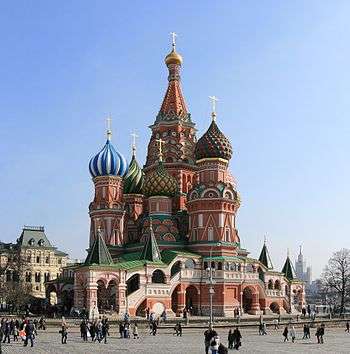
_(_UNESCO_World_Heritage_Site)._Barcelona%2C_Catalonia%2C_Spain.jpg)

